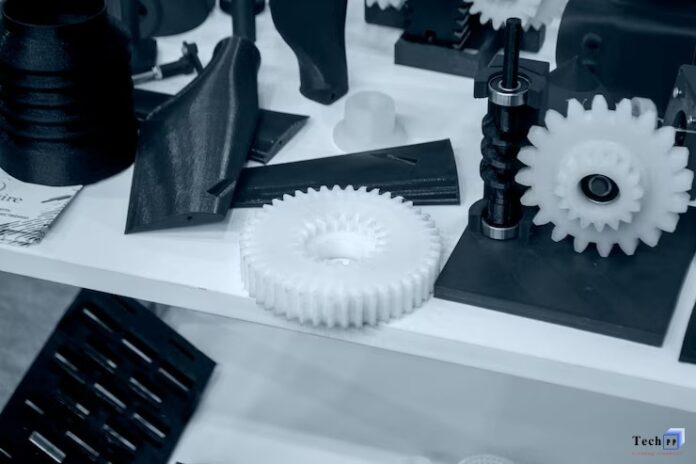Rubber overmolding! What role does over-molding play in automotive manufacturing? This technique involves applying a rubber layer over existing parts made from materials such as plastic or metal, helping to improve their functionality. Combining the benefits of both materials strengthens, increases flexibility, and extends the longevity of automotive parts, making them better equipped to handle various environmental challenges.
What Is the Overmolding Process?
Rubber overmolding is a manufacturing process that involves applying a rubber layer over an existing part made from materials such as plastic or metal. The purpose of this process is to combine the unique properties of rubber with the base material, improving the overall functionality and durability of the part. The rubber layer often serves to enhance grip, comfort, and protection, making it ideal for a wide range of automotive applications.
During the manufacturing process, the base material is placed into a mold, and the rubber is then injected around it. This results in a component with a durable outer layer that provides increased resistance to environmental factors, such as moisture and extreme temperatures. The combination of materials can create parts that are both strong and flexible, offering a better overall performance.
Key Applications in Automotive Parts
In automotive manufacturing, the process plays a vital role in improving the functionality of various components. One of the most common applications is in the production of steering wheels. The rubber layer over the steering wheel provides an ergonomic and comfortable grip, making it easier for drivers to control the vehicle. The rubber enhances the wheel’s durability, helping it withstand regular use and exposure to weather conditions.
Another essential application is in electrical connectors and wiring. Automotive electrical systems are exposed to vibrations, moisture, and temperature changes, which can cause wear and corrosion over time. Adding a rubber layer around electrical connectors protects these parts from the elements, helping maintain a reliable and safe electrical system. The rubber also helps prevent damage from vibrations, ensuring the electrical components function correctly.
Improving Comfort and Grip
The automotive industry also benefits from this technique in parts designed for comfort and ease of use. Components such as door handles, gear knobs, and buttons are often molded with rubber to improve the tactile experience. The rubber provides a soft yet firm surface, making these components easier to operate, especially in cold or wet conditions.
This application also helps enhance vehicle safety features. For example, the rubber layer on brake pedal pads ensures drivers maintain a firm and comfortable grip. The added rubber reduces the chances of slipping, offering both improved performance and safety.
Noise and Vibration Reduction
This molding helps minimize noise and vibrations within a vehicle. Parts such as door seals, window seals, and trim pieces are often treated to ensure a tighter and more secure fit. This helps block external noise from entering the vehicle and reduces vibrations during driving, contributing to a quieter and more comfortable environment for passengers. Additionally, by limiting external air infiltration, these seals can also help reduce vehicle pollution exposure inside the cabin.
In addition to sound insulation, rubber overmolding can dampen vibrations in various automotive components. For instance, components that are prone to movement, such as certain parts of the vehicle’s suspension system, can benefit from rubber’s vibration-absorbing qualities. The reduction in vibration not only improves comfort but can also help prevent premature wear on parts, extending the overall lifespan of the vehicle.
Boosting Durability
Rubber-coated parts’ durability enhances the overall longevity of vehicle components. Parts such as door handles and electrical connectors are more resistant to wear and damage, resulting in fewer replacements. This contributes to the long-term performance and reliability of automotive parts.
Additionally, the integration of rubber helps improve the vehicle’s overall user experience. Rubber layers can provide better tactile feedback and comfort, especially when drivers or passengers interact frequently with the car. This enhances the functionality of specific parts and ensures that they maintain a high standard of usability over time.
Benefits of Overmolding with Rubber in Automotive Manufacturing
One of the main advantages of automotive manufacturing is the ability to create durable and functional components cost-effectively. By applying rubber to existing parts, manufacturers can streamline production and reduce the need for additional steps or parts. This method also helps minimize material waste, as fewer components are needed to achieve the desired performance.
This process also offers greater design flexibility. Manufacturers can adjust the rubber layer to meet specific functional and aesthetic needs, whether it’s enhancing comfort, grip, or protection. This adaptability allows automotive manufacturers to create components that perform well while addressing visual and ergonomic considerations.
Rubber overmolding is an essential process in automotive manufacturing that helps create durable, functional, and comfortable components. From steering wheels to electrical connectors, this process offers many benefits, including improved grip, enhanced comfort, and better protection against environmental factors. The automotive industry’s focus on efficiency, safety, and performance makes this technique an essential method for improving the quality of vehicle components. Its continued evolution provides automotive manufacturers with new opportunities for innovation and design.


